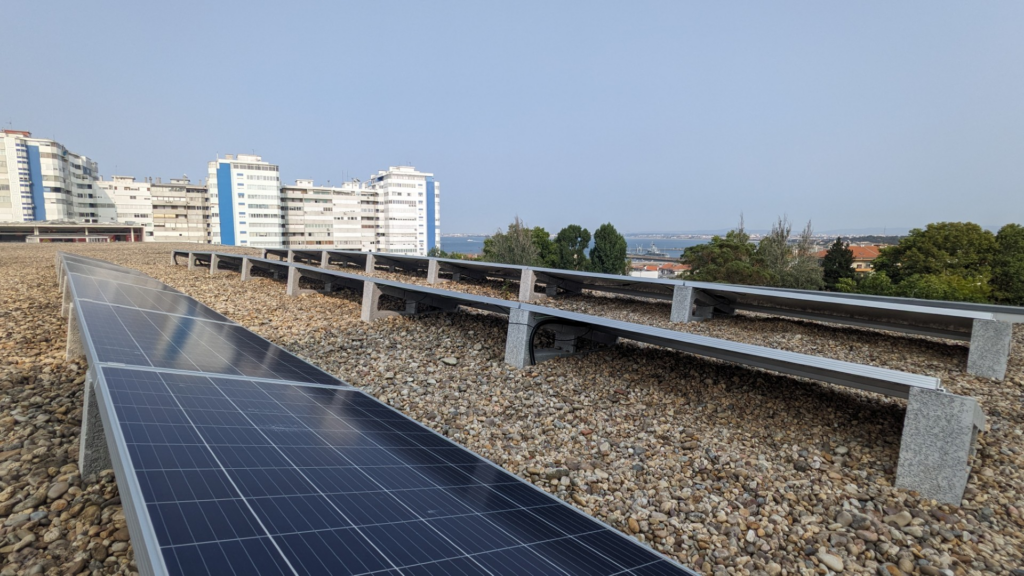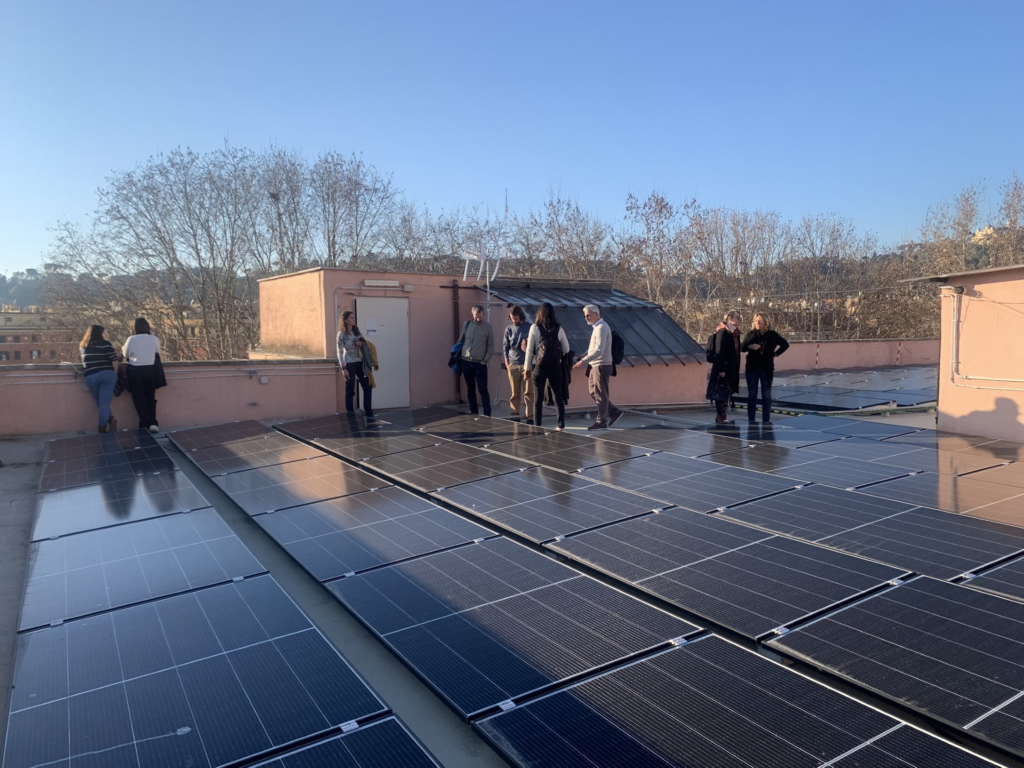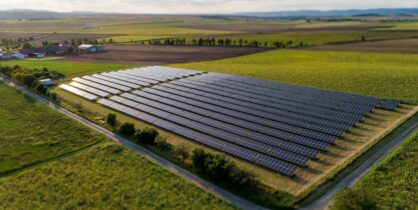Fast Enough, Fair Enough? Europe’s Race for Renewables

The EU’s climate goals require rapid renewable and grid expansion while ensuring fairness for local communities.
Arthur Hinsch is a Senior Expert on Sustainable Energy Systems at ICLEI Europe, a global association of local and regional governments dedicated to sustainability. For the past seven years, he has worked on promoting the socially inclusive uptake of renewable energy infrastructure with emphasis on supporting local governments in facilitating an accelerated, but fair energy transition. In this conversation, he explains the initiative for Fast and Fair Renewables and Grids, Europe’s first cross-sectoral agreement on fairness in renewable energy, and why local voices are essential to accelerating the transition.
For those who do not know, what does “fast and fair” mean in this context?
Fast refers to the urgent need to accelerate the rollout of renewable energy and electricity grid infrastructure. Europe has committed to significant climate targets, such as achieving at least 42.5 percent renewable energy in gross final energy consumption by 2030. Meeting this will require installing capacity equivalent to about 80 percent of today’s total generation in only 4.5 years. That requires a dramatic step up in pace.
Fair refers to the way this is done. Speed alone is not enough if projects are developed without listening to communities or addressing local concerns. If people feel excluded from decision-making or believe they are bearing the costs without seeing benefits, they are far more likely to resist. That resistance can slow projects down through protests, legal challenges, and political pressure. Fairness means making sure communities are involved early, that their perspectives are heard, and that they share in the benefits. It is about ensuring that the transition to renewable energy is something people feel part of, not something imposed on them.
The EU’s target requires installing the equivalent of nearly 80 percent of today’s total generation capacity in just five years. What kind of shift does this represent?
It represents a fundamental transformation of Europe’s energy system. Many areas that have never hosted renewable energy infrastructure will soon see it. This includes wind farms, solar parks, and the grid infrastructure needed to connect them.
From a technical perspective, this is about more than generation. We also need to expand and modernise the grid to integrate new capacity and to make the system more flexible. That means building substations, upgrading lines, and improving digital management systems so the network can handle more variable supply and demand.
From a social perspective, the shift means more people will live near renewable energy projects. This will bring opportunities, such as jobs, investment, and potential ownership models, but it can also lead to tensions over land use, environmental impacts, and distribution of benefits. How we manage those social impacts will be just as important as meeting the technical challenge.
Despite the urgency, deployment remains too slow. What is holding things back?
There are several reasons. Acceptance and fairness are important factors, but they are not the only ones. There are also administrative and technical barriers. For example, permitting processes are often under-resourced and slow, with authorities struggling to process the large volume of applications. A single wind project can require huge amounts of paperwork.
When it comes to acceptance, one major bottleneck is the difficulty of reconciling different interests at the local level. Developers want to build profitable projects. Investors want a return. Landowners want compensation for the use of their land. Environmental organisations want to protect biodiversity. Energy cooperatives want community ownership. Local citizens may be in favour of renewable energy in principle but have concerns about specific projects. And local governments, often with limited capacity, are often left to mediate between these groups.
If these interests are not brought into alignment, projects can end up in court. That delays implementation and risks damaging trust.

Why is early involvement of local communities and mayors so important?
Because they are the ones who live with the outcomes. Decisions made at national or European level still need to be implemented locally. Local governments are the point where policies meet practical reality.
Evidence shows that when developers engage early and meaningfully with local communities, projects run more smoothly. Early engagement allows concerns to be addressed before positions harden, and it helps ensure that local benefits are built into the project from the start. It also gives people a sense of ownership over the change happening around them, which can make a big difference in levels of acceptance.

Community pushback is often mentioned in wind and solar projects. What drives this resistance?
It depends on the local context, but there are common themes. People may feel they were consulted too late, when the project was already designed and their input could not meaningfully change it. They may see that most of the financial benefits leave the area, with little going back into local services or infrastructure. And there are also concerns about visual impact, noise, and environmental effects.
The key is to engage early and to design benefit-sharing schemes that are meaningful in the local context. That could mean direct financial benefits, investment in community projects, or even shared ownership of the infrastructure. The important thing is that the benefits are clear, tangible, and connected to the people living nearby.
You cite the Margonin Wind Farm in Poland as a success. What made it work?
Margonin was developed by Relax Wind Park I Sp. z o.o., a special purpose vehicle indirectly owned by EDP Renováveis, S.A., with co-development by Buttero Holding Limited, representing Polish private investors, worked because it was built on transparency and strong local relationships. The developers set up public consultation sessions, information points, and used local media to keep people informed. They involved the local municipalities and made sure materials were accessible and easy to understand.
By making the process transparent and building trust early on, they reduced uncertainty and created a more cooperative environment. The lesson here is that transparency is not just about sharing information, it is about building a relationship with the community.
Transparency has become a buzzword within the sector. How does it really build trust?
Transparency helps by making sure there are no surprises. If people understand the process, know what decisions are being made and why, and see how benefits will be distributed, they are more likely to support a project.
In the Südharz Grid project, developed by 50Hertz, in Germany, for example, there was informal public dialogue beyond what was legally required. This gave people more opportunities to ask questions and influence the outcome. Financial transparency is also crucial. If a municipality receives revenue from a renewable energy project, it should be clear where that money goes. Publishing this information and actively communicating it can help people see the benefits of hosting infrastructure in their area, and it reduces the risk of mistrust or misinformation.
Community-led energy projects sound promising, but uptake is slow. Why is that?
The European legal framework supports community-led projects, but national implementation varies. Some countries have enabling frameworks that make it relatively straightforward, while others still do not. Smaller actors often lack the administrative and financial capacity to compete with large developers.
The Fast and Fair initiative includes a principle on creating a level playing field. This means making sure community-led projects have access to the market and the grid on fair terms. It can also mean reserving space in tenders or auctions for these projects, and providing technical support so they can develop viable proposals.
If we want a truly inclusive energy transition, community-led initiatives must be part of it, and that requires both legal and practical support.
Why is a united, cross-sectoral approach so important?
Because it creates a shared baseline for fairness that all stakeholders can agree to. The Fast and Fair Renewables and Grids initiative brought together large renewable energy companies, community energy organisations, environmental NGOs, local governments, and civil society groups. It took six months of negotiation to reach agreement, but the result is a set of principles that everyone stands behind.
This makes it easier for local governments to mediate between different interests. They can point to the fact that all major sectors have agreed on a baseline for what fairness looks like, which helps take the heat out of local disputes. It is also a signal to the public that the industry, civil society, and government are working together, not against each other, to make the transition work for everyone.
The initiative is endorsed and actively supported by major interest groups. The currently include: Climate Action Network Europe, the Council of European Municipalities and Regions, the European Environmental Bureau, Energy Cities, the European Renewable Energy Federation, the European Youth Energy Network, ICLEI-Local Governments for Sustainability, Koop Wind, RESCoop.eu, Solar Power Europe, Wind Europe.
Any final thoughts?
The Fast and Fair Renewables and Grids initiative is the first of its kind in Europe, and possibly in the world. It shows that it is possible for diverse stakeholders to agree on a common approach to fairness in renewable energy deployment.
If we can translate these principles from the European level into national and local contexts, we can accelerate the rollout of renewables while making sure communities are part of the process and see the benefits. That is the only way the transition will succeed in the long term.
